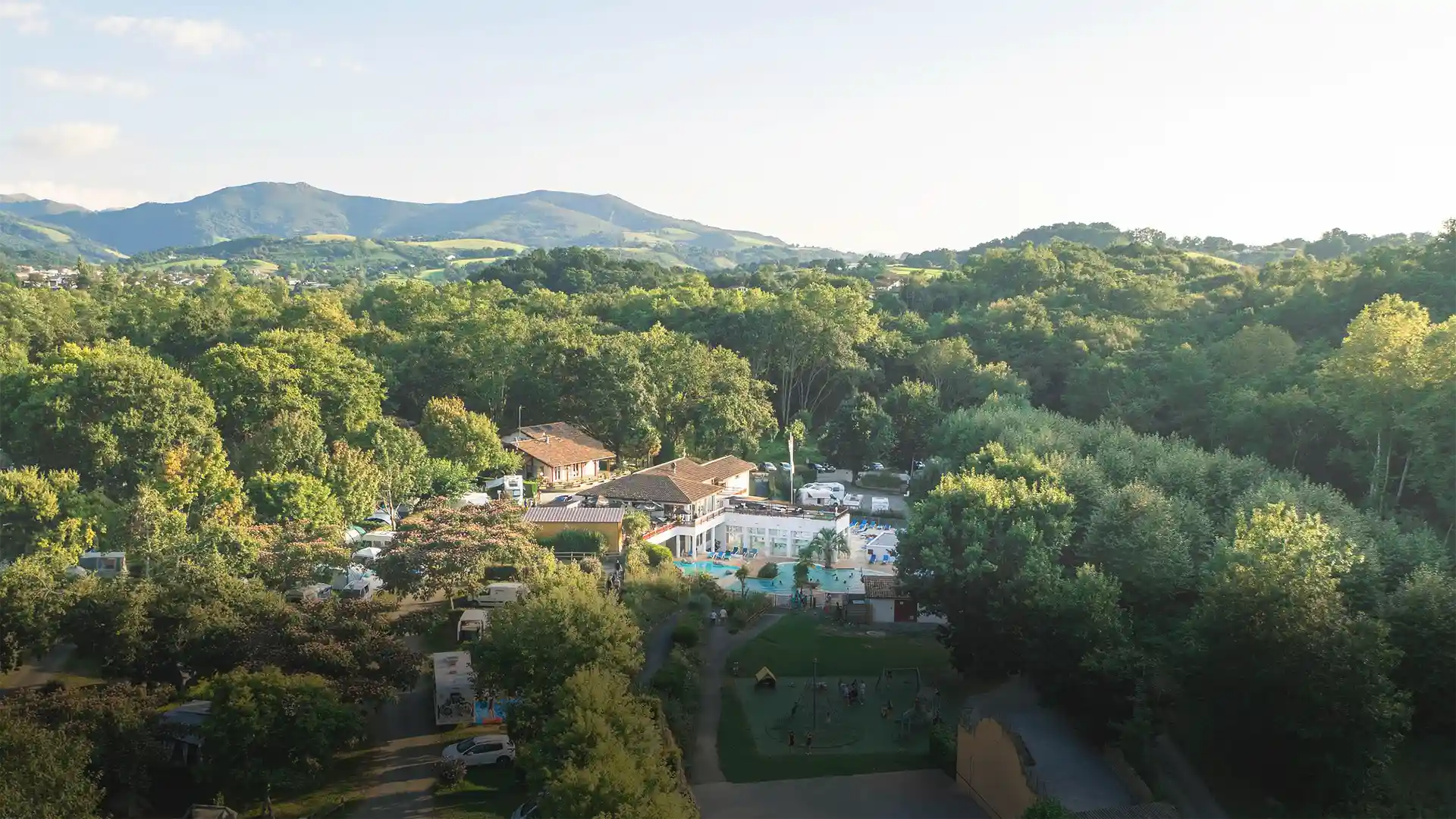What to see and do in Urrugne
At the gateway to Spain, in the Basque Country between Saint-Jean-de-Luz and Hendaye, Urrugne is a charming village in the Labourd region that has preserved its traditions, intact culture and typical Basque architecture. What to see and do in Urrugne Follow the guide!

A typical Basque coastal village
Located 30 km from the 4-star Le Biper Gorri campsite, between Saint-Jean-De-Luz and Hendaye, not far from Ciboure, Ascain, Sare and Biriatou, Urrugne is a small Basque village of some 10,000 inhabitants, part of the province of Labourd. Along the Bidassoa, it stretches from the famous Corniche Basque, overlooking theAtlantic Ocean to the foothills of the Pyrenees.
Under the Ancien Régime, Urrugne was one of the first relays of the horse post office, created in 1584. The village was located on the shortest route from Paris to Madrid, a thirteen-day ride from the French capital to the Spanish border. The Posta house, opposite the church, now houses the Tourist Office.
The fortified church of Urrugne
In the heart of the village, Urrugne’s Saint-Vincent church stands out with its imposing 45-meter high bell tower. A gigantic church compared to the village! Built in the 10th century, then remodeled in the 16th century, the building resembles a fortress, complete with musket loopholes. Its sundial is famous for its motto “vulnerant omnes ultima necat” (all hours hurt, the last one kills). The interior of the church is typical of Basque churches, with three floors of carved oak galleries, traditionally reserved for men. Among the items on display are a stoup and a classified pulpit.
Château d’Urtubie, jewel of the Basque Country and pride of Urrugne
A visit to Château d’Urtubie is a journey through time and history. It is one of the oldest fortified castles in the region. It has been in the same family since it was built in 1341. Throughout its 700-year history, the he Château d’Urtubie has seen personalities from all eras pass through its walls: Charles Quint, Louis XI, Louis XIV, Marshal Soult and the Duke of Wellington during the Napoleonic Wars. After a visit to the château, take a stroll in the estate’s six-hectare park. The Orangerie offers a unique exhibition on Basque plants and their medicinal properties. Further information: www.chateaudurtubie.net
The Chapel of Our Lady of Socorri
A number of chapels, oratories and crosses are scattered throughout the mountains and foothills, and can be discovered on any number of walks. Of particular note is the chapel of Notre-Dame de Socorri, built on the heights of the village in the 17th century by sailors from Henday. The chapel is surrounded by an old cemetery with discoidal stelae typical of the Basque country. From the hill, there’s a lovely unobstructed view of Ciboure, Socoa and the Rhune mountain on one side, and the ocean on the other.
The festivities of Urrugne
In Urrugne, Basque traditions are still very much alive and well. Urrugne’s traditional 5-day festival, known as “Bixintxo”, starts on the 1st weekend of September. On the program: pedestrian bullfight, pelota games in the trinquet, Basque strength games, fandango contest, country-style meal, dances, concerts and fireworks.
The Urrugne corniche
A listed natural site, the Corniche Basque stretches for 8 km between the Socoa to Ciboure and the commune from Hendaye via Urrugne. The sentier littoral, the Viviers basques, the Belharra wave offer the Corniche basque a unique showcase at the foot of the Rhune and Mont du Calvary.
Ibardin pass
Situated on the French-Spanish border in the Urrugne area , the Col d’Ibardin is known for its many stores, where holidaymakers generally score good deals (particularly on tobacco and alcohol). It’s also a must-do hike in the Basque Country, with magnificent views over the Bay of Biarritz, Hendaye and the Rhune mountain range.
Hiking in Urrugne
The Soulac route (also known as the “voie du littoral” or “voie des Anglais”) is a secondary route of the pilgrimage to Santiago de Compostela, passing through Urrugne, where you’ll find a pilgrim hostel, the “Xaharrenia”. The route passes through Bidart, St Jean de Luz, Ciboure and Urrugne. On the last high point before Hendaye, you can branch off onto the GR10, which makes an incursion into Urrugne. This Grande Randonnée itinerary takes you to the heart of the mythical Rhune massif in the company of free-roaming Basque horses.


